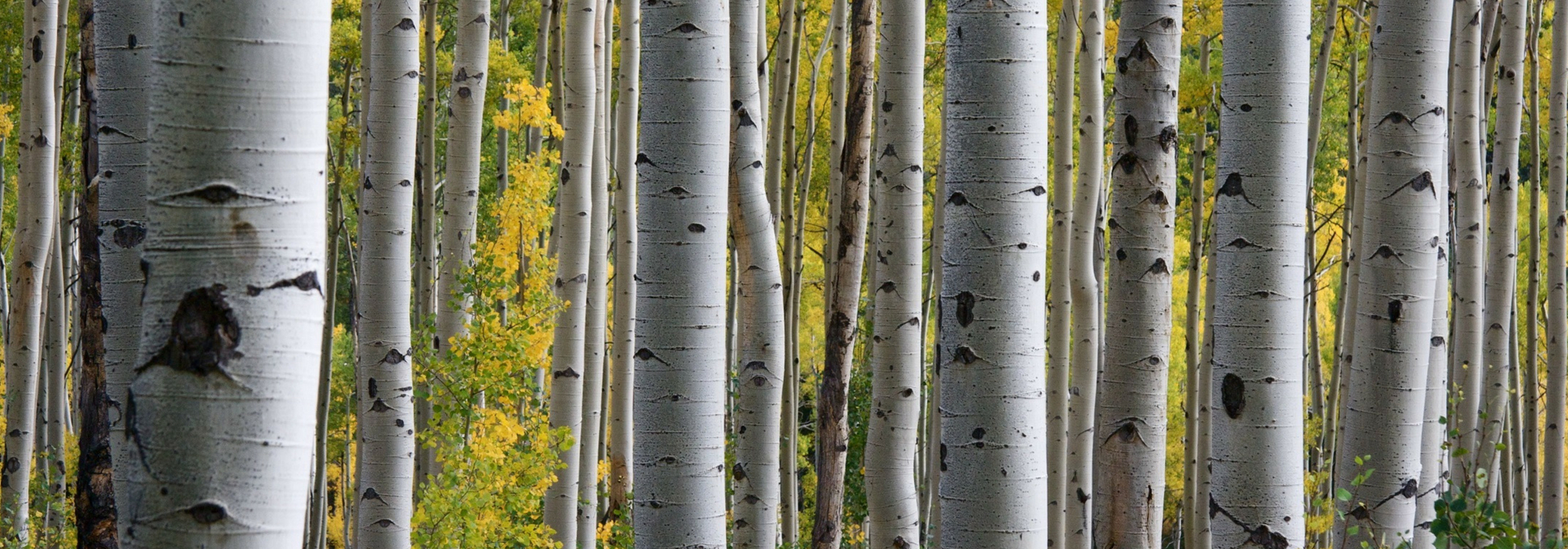
Birches: planting, pruning and care
Contents
Birch in a nutshell
- Birches are easy to grow trees, very hardy and fast-growing.
- They are well-suited to small gardens, adding a touch of splendour in just a few years. Their shade remains light.
- They have a graceful silhouette and white bark that brightens gardens in winter.
- Their foliage turns a bright yellow in autumn, and their aments adorn the branches throughout winter.
- They tolerate dry to waterlogged soils, shallow, poor soils, and thrive in full sun as well as partial shade.
A word from our expert
Birches are fast-growing trees, admired for their white trunks with smooth bark that exfoliates in strips of parchment-like bronze-gold, pinkish, orange, and so on.
We appreciate this common yet unique tree for its light silhouette with a soft and graceful habit that adds a romantic touch in every season. Planted in front of a hedge or a grove of dark green or bluish needle conifers, its slender branches, swaying in the breeze, allow a glimpse of the background through their transparency. The medium green foliage declines simply into lovely light yellow to golden hues in autumn, before falling. The silver bark of the branches enhances the frost effect during the winter season. In short, the birch is a tree that stands on its own, without ostentatious effects, delighting us with its presence without imposing any constraints.

Some foliage of birches: Betula pendula ‘Crispa’, Betula nana, Betula pendula ‘Yougii’, Betula nana ‘Golden Treasure’.
Explore the variety of this essential oil to create clean and graphic scenes with a unique character. Birches are indeed appreciated in contemporary gardens where they are planted closely together to highlight the verticality of the colourful trunks devoid of branches. Positioned at the garden’s edge, they form an elegant and natural living barrier, far more attractive than a trimmed hedge of conifers.
You can also grow them on a terrace, in a container of 1 metre square for a chic touch!
Description and botany
Botanical data
- Latin name Betula sp.
- Family Betulaceae
- Common name Birch
- Flowering depending on the varieties, between March and May
- Height depending on the varieties between 80 cm and 25 m
- Sun exposure full sun to partial shade
- Soil type fairly cool and drained, rich or poor depending on the species
- Hardiness Excellent
Birches are trees of the northern hemisphere (only 4 species in Europe) whose distribution area extends to arctic regions in the form of dwarf and prostrate species such as Betula nana and humilis. Their exceptional hardiness, beyond -45°C for most, means they are frequently found in temperate climates up to 2000 m in altitude. They belong to the Betulaceae family, just like alder, hornbeam, or hazel, and comprise around a hundred species of trees or bushes, characterised by distinct male and female flowering catkins on the same tree.
Birches are a pioneering species that is the first to grow during the recolonisation of heathland, which explains their low requirements: poor, siliceous, shallow, waterlogged soil, full sun, cold, and humidity do not deter this tree. On the contrary, it will hasten to grow upwards, except for prostrate forms like B. nana and humilis, and reach its maturity after 10 years. In nature, it declines when other species that it has sheltered from its light shade during their early years, such as oak or ash, followed by beech, become dominant.
Birches offer a slender and light silhouette, reaching 20 to 30 m in height, with fine branches that droop under the weight of flowers and foliage. The leaves are more or less triangular and dentate, or even lobed as in the case of black birch, and are deciduous and of modest size (up to 15 cm including the petiole). Light green in spring, they turn a more intense green in summer before displaying a yellow to golden hue in autumn. The lamina is sometimes pubescent, allowing for the distinction of certain species such as Betula pendula and pubescens, our main native species.
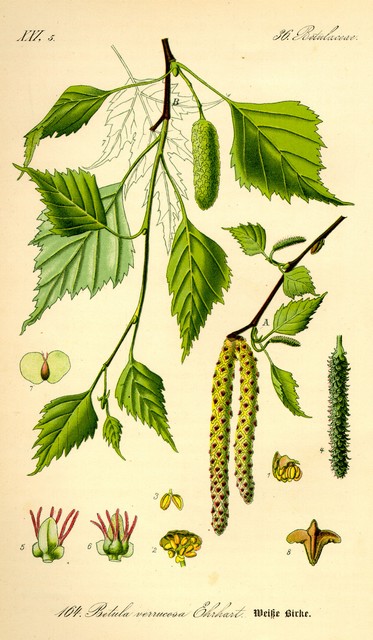
Betula pendula – botanical illustration
However, the success of birches used in garden landscaping comes from their remarkable pearly bark, white but also pinkish or orangish, sometimes interrupted by black warts as seen in Betula pendula, also known as the warted birch. Note that young specimens have brown bark that lightens with age. This bark remains thin and exfoliates in parchment-like strips, displaying delicate shades of white, ochre, and pinkish beige like Betula utilis var. jacquemontii. The Chinese white birch Betula albosinensis shows a pale coppery vermilion bark, while the yellow birch, Betula alleghaniensis, focuses on cream to golden bronze hues. A bit rarer, Betula maximowicziana, valued for its long flower catkins, displays a beautiful grey-white or orangish parchment-like bark with age. The paper or canoe birch, Betula papyrifera, renews its bark by peeling off long sheets of cardboard-like paper that the Canadian Indians used to construct lightweight boats and many everyday objects (bags, etc.). The dark red to almost black hue of these young trees becomes reddish-brown and then shiny cream-white at maturity. Note that not all birches have thin and light bark, as seen in Betula nigra from the eastern United States, which forms large grey scales with age.
The flowering of birches is not spectacular, but the male catkins, 3 to 10 cm long, upright then drooping along the fine branches, provide decorative interest throughout winter. They form in autumn and only release their pollen from March-April or May when the female catkins, 1 to 3 cm long, arranged in groups above the males, open. Unfortunately, some people are allergic to the abundant pollen of birch. It is therefore advisable not to plant them in your garden.
The fruits resemble the male catkins, are greenish in colour, and disarticulate when releasing the winged seeds (samaras) enclosed between the scales of the spike.
The birch is the tree for beginners or the first tree to plant to add character to the garden while waiting for other species to grow. However, you will find it difficult to plant anything at its base except for a few grasses or heathers, as its roots are shallow and dense. You can create very contemporary scenes by aligning several specimens spaced only 2 m apart, thus creating a colourful screen. Traditionally, birches are planted in threes in the same hole to form a false coppice or in alignment along roads. Its lifespan rarely exceeds 30 or 40 years, except in Nordic countries where the slowing of its growth ensures firmness in the wood. Its longevity then exceeds 100 years, and the trunk diameter reaches 60 cm.
 Some beautiful birch barks: Betula nigra, Betula pendula, Betula albosinensis ‘Fascination’, Betula utilis var. jacquemontii.
Some beautiful birch barks: Betula nigra, Betula pendula, Betula albosinensis ‘Fascination’, Betula utilis var. jacquemontii.
The main species and varieties
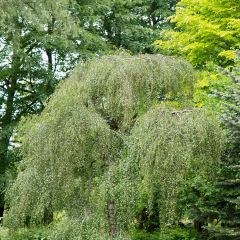
Betula pendula Youngii - Birch
- Flowering time April, May
- Height at maturity 5 m
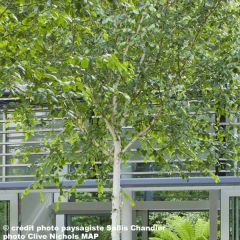
Betula utilis var. jacquemontii - Himalayan Birch
- Flowering time May, June
- Height at maturity 15 m
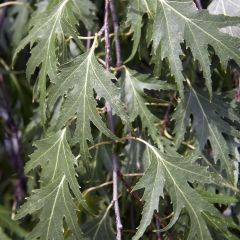
Betula pendula Crispa - Birch
- Flowering time April, May
- Height at maturity 12 m
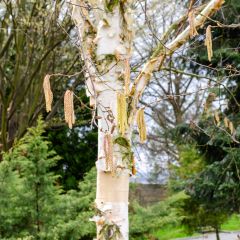
Betula albosinensis Fascination - Birch
- Flowering time April, May
- Height at maturity 8 m
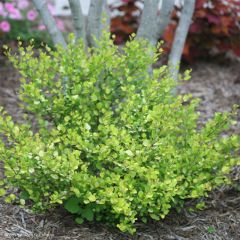
Betula nana Golden Treasure - Dwarf Birch
- Flowering time June
- Height at maturity 90 cm
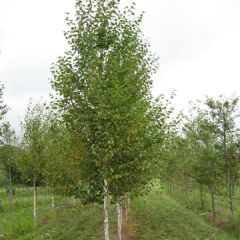
Betula nigra Heritage - Birch
- Flowering time May, June
- Height at maturity 9 m
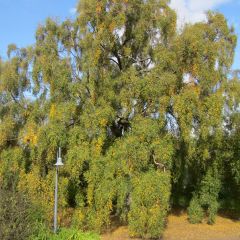
Betula pendula Tristis - Birch
- Flowering time April, May
- Height at maturity 17 m
Discover other Betula - Birch tree
View all →Available in 1 sizes
Available in 1 sizes
Available in 2 sizes
Available in 1 sizes
Available in 2 sizes
Available in 1 sizes
Available in 2 sizes
Available in 1 sizes
Available in 1 sizes
Available in 1 sizes
Planting a birch
Where to plant birches?
Birches are trees well-suited to both cold climates, whether in plains or mountains, and to poor soils. Their branches, often upright and pleasantly airy, filter light nicely in summer without creating too much shade.
Easy to cultivate, birches thrive in a soil that is preferably quite cool, low in lime, humus-bearing, and slightly acidic to achieve beautiful foliage colours. They also develop in neutral to slightly calcareous clay, loamy, sandy, peaty soils that are low in nutrients and occasionally dry.
They tolerate both full sun and partial shade.
However, they do not appreciate the Mediterranean climate or salt spray. Betula nigra, native to the southeastern United States, is a species more tolerant of hot, humid climates and waterlogged soils.
Birches produce numerous shallow roots that can hinder the establishment of other plants beneath their crown by drying out and depleting the soil.
How to plant?
Allow for a spacing of at least 2 m between each birch.
- Dig a planting hole two to three times the size of the root ball.
- Add one to three shovelfuls of well-decomposed compost.
- Place the plant in the planting hole.
- Replace the soil and lightly firm it down.
- Water.
- Spread a layer of mulch at the base to maintain good moisture around the roots. This will also limit the growth of weeds.
To create a false coppice of birches, dig a pit 1 m to 1.20 m in diameter and 60 cm deep, and place the root balls at an angle to give the illusion of a single tree. Be careful not to bury the collars of each of the plants.
For pot cultivation, place a drainage layer of 3-4 cm at the bottom of the pot (gravel, broken pottery, etc.). Add a mix consisting of 1/3 soil, 1/3 potting compost, and 1/3 coarse sand.
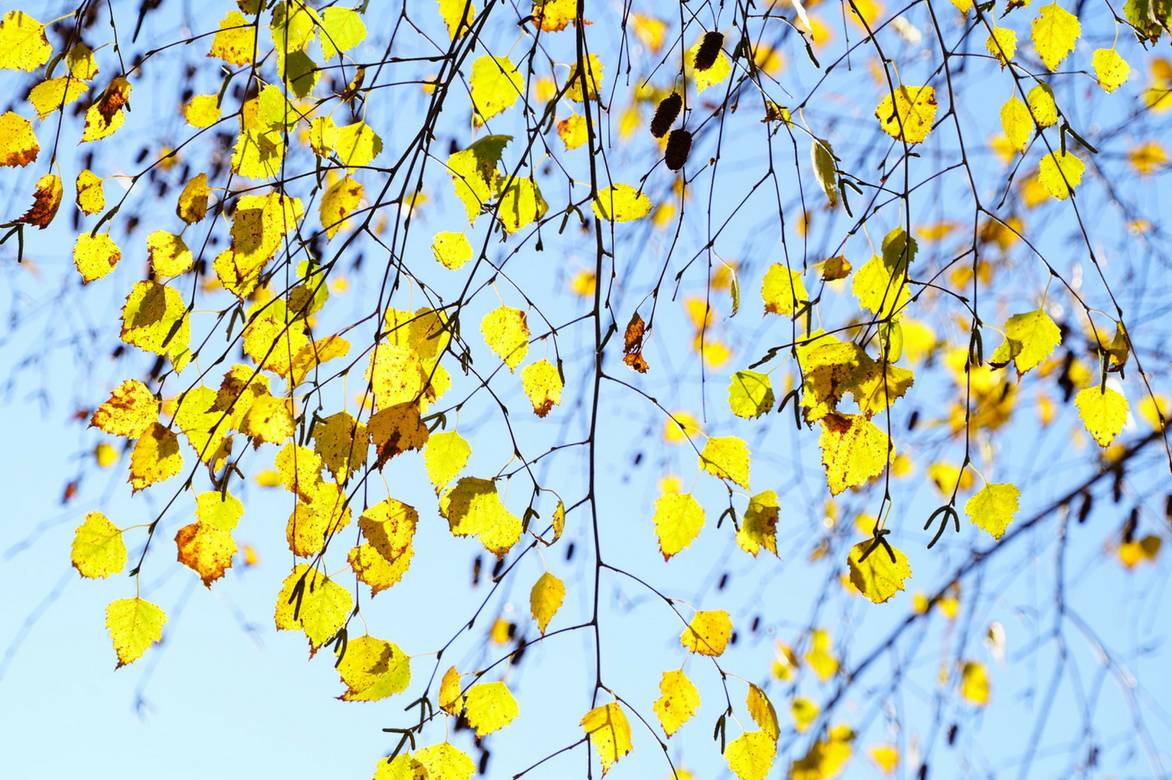 Autumn foliage of a birch
Autumn foliage of a birch
Care and pruning of birches
Birches require absolutely no maintenance except for occasional watering during dry months in the few years following their planting. You can mulch generously around the base to address this issue.
Container-grown specimens require regular watering, which can be managed with an automatic watering timer.
Birches are generally very resistant to diseases and pests. They tolerate pruning poorly and are often infected by European canker (Nectria galligena) when wounds are significant. Simply clean the branches of broken twigs and neatly prune any broken branches or those showing necrosis and swellings.
You can rub the trunks and large branches with a sponge soaked in soapy water once a year to enhance their shine in autumn.
When the ground is very wet, root rot can attack birches, causing them to decline. Black birch is not susceptible to this. Other issues (aphids, rust, scale insects) are not dangerous. Avoid applying too much nitrogen fertiliser, as it makes the tree more vulnerable to pest attacks.
→ Learn more about the diseases and pests of birch in our advice sheet.
Propagation
The multiplication of birches is a matter for professionals who carry out grafts or cuttings. Spontaneous sowings can be valued by extracting young plants in the following spring. Seeds should not be buried. Place a board on the soil to keep the seeds on the ground after their dissemination.

Catkins of birches: Betula nana, Betula pubescens and Betula pendula.
Using and combining Birch
The qualities of birch allow it to adapt to all styles of gardens, although it prefers cooler climates, as it does not thrive at all in the south of our country. The white bark enhances the enchanting atmosphere of winter. It harmonises with the pale skies, accentuates the frosted appearance of the branches, and catches the light as soon as a ray of sunshine brushes against it.
The birches are large to medium-sized, deciduous trees, quite hardy with decorative bark and light foliage, used in groups or as solitary specimens in large gardens. Some display a beautiful weeping habit like Betula pendula ‘Crispa’ (with laciniate leaves) or ‘Tristis’, a purple or variegated cream foliage similar to Betula pendula ‘Royal Frost’ and Betula nigra ‘Shiloh Splash’, and of course, a colourful bark. You can create a false coppice by planting 3 identical specimens in the same hole, to give more depth to the scene.

An idea for association: Betula utilis var. jacquemontii, Saxifraga umbrosa, Geranium phaeum ‘Album’, Tiarella cordifolia ‘Moorgrun’, Astrantia major ‘White Giant’, Brunnera macrophylla ‘Jack Frost’.
Other species and dwarf varieties are well suited for small spaces or even for container cultivation, such as Betula nana, which you can accompany with dwarf conifers or spring bulbs. Upright varieties of low-vigor birch like B. nigra ‘Little King’ (3 m tall), Betula pendula ‘Youngii’, or even B. utilis var. jacquemontii can also be grown in a container of 1 m on each side.
Have fun creating groves with several species of decorative bark by associating for example Betula utilis var. jacquemontii, with a white trunk, Betula albosinensis ‘Fascination’, with a coppery trunk, alongside a Prunus serrula with mahogany bark accompanied by a small cinnamon-barked maple (Acer griseum). The latter should be planted at the periphery to avoid being overshadowed! You can space the specimens only 2 m apart on a surface of 60 m², which amounts to planting 15 trees. Plant them young as growth is rapid and ensure there are no overhead networks. Vigorous varieties like B. utilis var. jacquemontii, which reaches 12 or 13 m in less than 10 years, or B. nigra ‘Heritage’, should preferably be placed in the background. At the base, create a carpet of robust perennial plants with pachysandra, Carex morrowii, green ophiopogon (the black may turn green due to lack of light), or even epimedium (elf flower) which is slower to establish.
Did you know?
Birch forests are referred to in French as boulaies, boulinières, or bétulaies. Sap and bark are used in phytotherapy. The root of the Latin name Betula may refer to the pitch known as betu in Celtic, obtained by heating young trees filled with sap. Birch branches were used to make brooms employed to drive away evil spirits or the spirit of the past year on 31 December in certain regions of France. They were also used to whip unruly students!
To go further
Discover our wide range of birches.
Discover our advice sheet on weeping habit trees.
Discover our advice sheet for choosing a birch.
Learn more about the most beautiful barks.
Check out Christine’s tutorial: How to dry birch leaves? and Gwenaëlle’s advice sheet: How to heal with trees?.
Our advice sheets: 7 amazing birches to discover and Birches, the most beautiful barks.
Discover our ideas for pairing birches.
Find our article on Betula utilis jacquemontii, also known as Himalayan Birch.
→ Learn more about the Himalayan birch or Betula utilis ‘Jacquemontii’.
Frequently asked questions
-
How to harvest birch sap?
The harvest of "birch water" corresponds to that of crude sap, rich in minerals, which takes place early in spring before the bud burst period of the tree's buds. The sap must be clear and transparent. It becomes opaque once the leaves have emerged, at which point it is too late. The extraction period varies by region and even from one tree to another, but it lasts for 3 to 4 weeks. Drill a hole 3 cm deep with a 6 mm diameter bit, 1 m from the ground. Place a 5-litre container at the base of the tree and connect the trunk to the drilled cap of the container with a 6 mm diameter plastic tube. Return after 12 to 24 hours to replace the container. Stop the harvest as soon as the sap becomes whitish, then drive a wooden dowel into the trunk to seal the hole.
- Subscribe!
- Contents
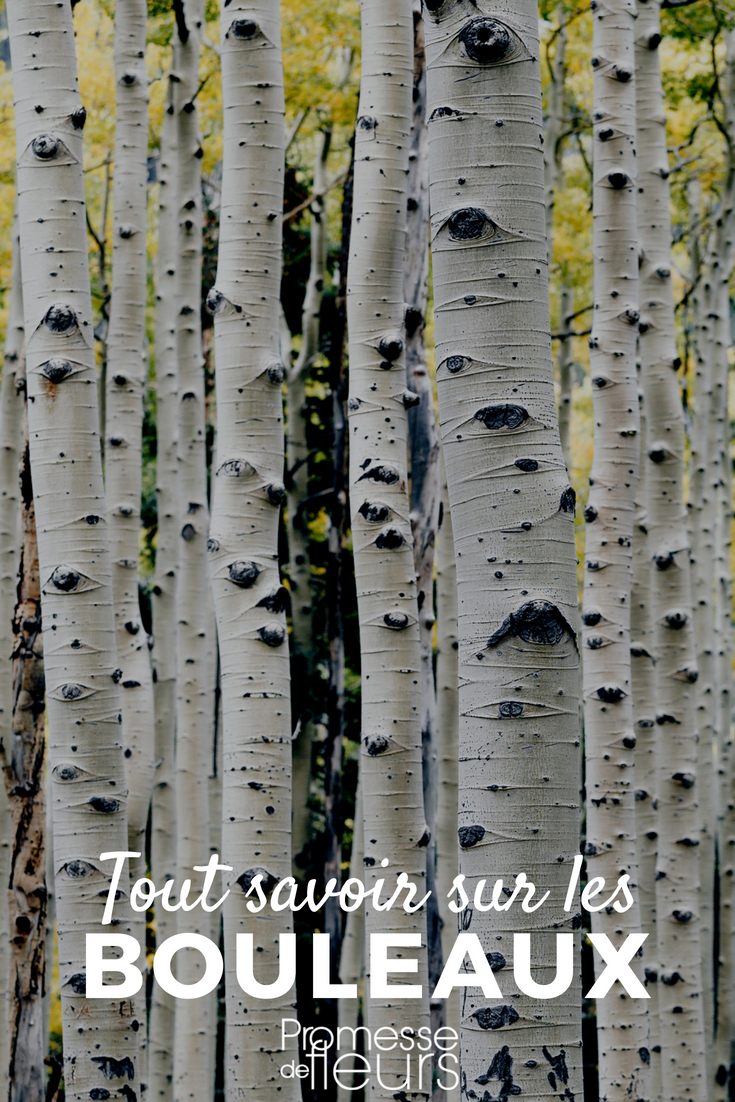
































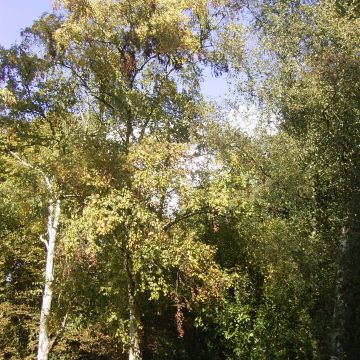



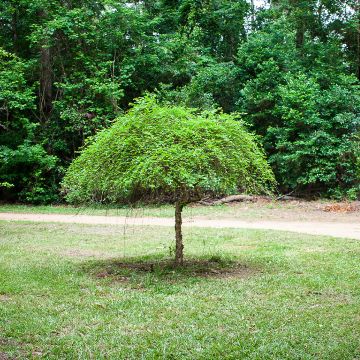

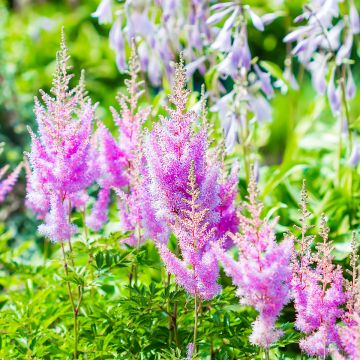
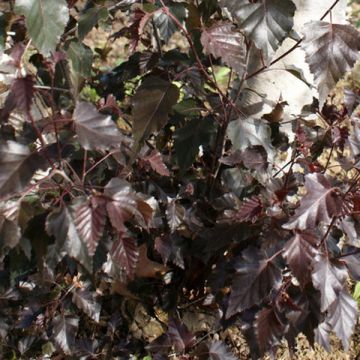
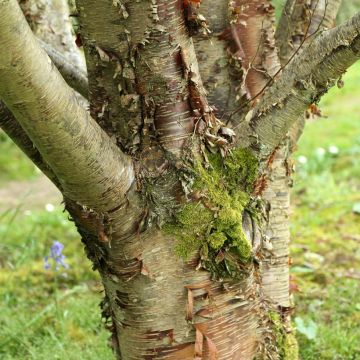
Comments